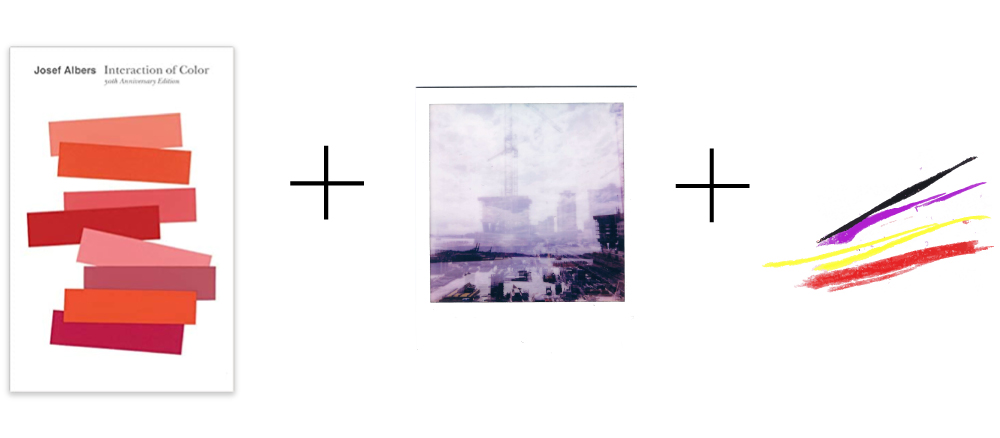New Westminster (local) plants
So–surprisingly– this was one of the hardest exercises. I think because I love colour but know that it’s hard to work with, analyse etc etc. But I resolved to be methodical. And this is what I did.
For this experiment I chose to keep the constant the double exposure of New West/Fraser River as image base. I then took pictures I already had of plants from New West and resolved to code these down to colour palettes, doing it be approximate %.

I didn’t think that the above would actually tie the viewer to place when they took in these colours but sometimes assumptions stop you from actually trying so I – at it was very hard – pushed through and made myself do this. Having got the top band I then did the % breakdown. Then in order to have it be a graphic element on the page and not just an out of proportion block of colour lying on top of the photo I stripped it down to a very thin band.
AB1: Colour bands at 50% opacity to help the graphic elements ‘sit’ on the page more within the already layered image.
When I started this project I had thought that the introducing colour was needed but hard to balance with an already atmospheric image. That is, an atmospheric image already has presence on the page and acts as – in perception terms -one message and we’re only capable of taking one in at a time. (Wish I could remember the reference). And so you are consicious, more so as a graphic designer, that anything else is in addition and so has to add something significant or support what is already there.

AB2: Horizontal colour bands at 100% opacity.

Overall I think AB1 is more successful in terms of a read image: the vertical bands sit more quietely within the image and point to markers within the layered landscape to take you through the double exposures, up the river.
In terms of tying one to place I don’t think they function at all, but the point of the exercise was to try and see what the colours and proportions -and these as a graphic asset – added did to the image.
Reflections immediately after (those weeks after are different and worth doing then).
I think words and obviously typeface choice would be a whole other ball game. I am not sure these needs words at the moment.
The placement of the vertical bars could be tweaked to take the viewer more easily through the image.
Reflexive thoughts – To come back to later.
Perry the Poster Man Collection (SFU)
I did this exercise really to show that colour is attached to an older time frame, perhaps, and therefore to nostalgia, but not to a place. These colours are muted and therefore speak to an older time when printing methods were different, the inks were different etc.
I chose the Perry the Poster Man Collection (held in digital form at SFU) because these posters were used throughout Vancouver and so I thought, although I don’t think you can connect colour use to place, if you can this would be the most relevant archive to pick from – as opposed to more international collections.

I chose the above for its very local subject, to see if that translated at all to association in the image to the left. Perhaps the dated colours do, but nothing as specific as location.

I chose this because the colour was unusual. Now colours seem to be used very much in terms of a branded choice, but I am not sure whether this was the case here, it seems much more innocent – just because it looks a little unusual and stands out.
Next steps…
So now that I’ve carried out very scientific analysis…all joking aside colour is so very subjective that short of asking large numbers of people and averaging out the answers to produce approximate generalisations…this was my way into this. The process has confirmed for me that what you are looking for colour to do is convey energy, whether older or more modern. I want to avoid nostalgia so I’ll have to make sure the colour choice is more modern and energetic. But given the power of branding today it might be challenging to get a colour that doesn’t bring with it another association. Perhaps though the fact that the base image is more art than design helps that. Also the words will be poetry and so that further distances this. Anyway my new friend Josef Albers is going to talk me through the next steps, I’ll print out the image and get ready to do some printing trials.
